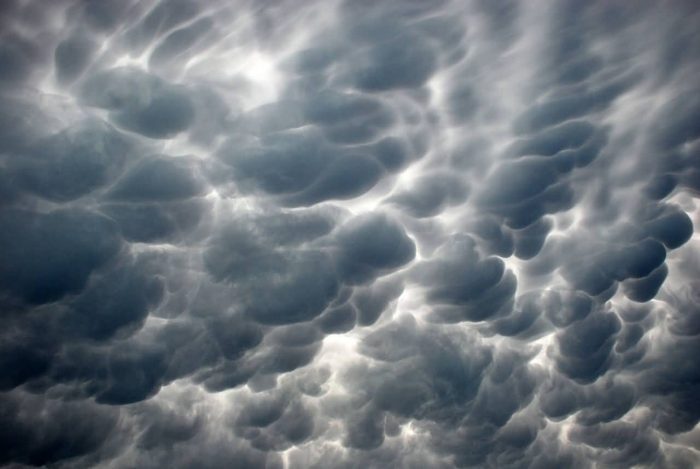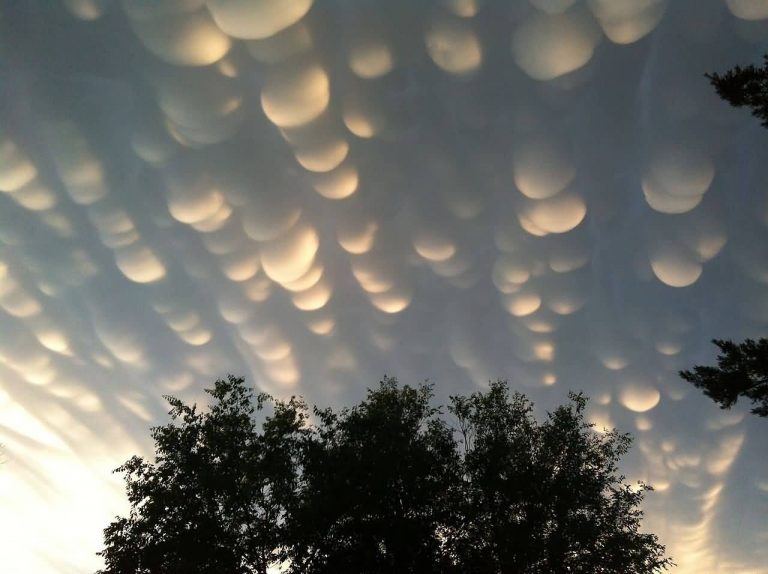Mammatus also known as mammatocumulus, the meaning is “mammary cloud”. It is a meteorological term applied to a cellular pattern of pouches hanging underneath the base of a cloud. The name mammatus is derived from the Latin mamma (meaning “udder” or “breast”).

Brocken Inaglory /CC BY-SA 3.0 | Mammatus Clouds And Crepuscular Rays
Mammatus are most often associated with the anvil cloud and also severe thunderstorms. They often extend from the base of a cumulonimbus but may also be found under altocumulus, altostratus, stratocumulus and cirrus clouds as well as volcanic ash clouds.

Derrich /CC BY-SA 3.0 | Mammatus Storm Clouds
Mammatus may appear as smooth, ragged or lumpy lobes and may be opaque or translucent. Because mammatus occur as a grouping of lobes. The individual mammatus lobe average diameters of 1–3 km and lengths on average of 0.5 km. A lobe can last an average of 10 minutes, but a whole cluster of mamma can range from 15 minutes to a few hours.

Hansueli Krapf /CC BY-SA 3.0 | Mammatus Clouds
The existence of many different types of mammatus clouds, each with distinct properties and occurring in distinct environments has given rise to multiple hypothesized formation mechanisms which are also relevant to other cloud forms. One environmental trend is shared by all of the formation mechanisms hypothesized for mammatus clouds: sharp gradients in temperature, moisture and momentum across the anvil cloud/sub-cloud air boundary, which strongly influence interactions therein.

Zachary Hauri /Public Domain | Mammatus Clouds



Connect with us